|
The Dark Powers That Bind - Destiner Press Titles | |
|
For free online reading simply click on the Sections listed below as they become available. SECTIONS |
Section 12. AMERICAS The New World? ~ Northern Exposure ~ Mesoamerica ~ Lord Inca ~ The End ~ Acknowledgements. The New World? We already know that the Vikings landed in North America. Mongol and Manchurian peoples from the Far East also crossed the Bering Straits north of China, Japan and Korea into Alaska. Indo-Europeans arrived across the Pacific Ocean from Asia. Greeks, or possibly Phoenicians bringing Greek culture, landed in Central America. Exactly who came first is a matter of debate, but what they brought with them is not. Here, in what we call the New World, simply because Christopher Columbus arrived in it thousands of years later, we find the same clones of the religion of the Old World. The evidence is abundant in everything from archaeology and architecture to customs and clothes. Most "experts" still cling to the myth that this was an independent development, not brought to these shores by others. These are the same experts who once unanimously declared that Central America had no great ancient civilizations until the explorations of the archaeologists John Stephens and Frederick Catherwood unearthed the Mayan empire between 1839 and 1842 and proved them all wrong. They are just as wrong in assuming that such civilizations were homegrown. Nothing could be further from the truth. They had their own flavour, just as much as the Hindu and South East Asian cultures did, but they were not conceived in isolation. They came from the same cradle of mankind in the Old World. There is no historically logical place to begin this overview, which will deal with the essential evidence but not attempt to cover every part of each continent or culture. It will simply start in North America and work down through the middle, Mesoamerica, to South America. In the extreme North, the Aleut and Inuit ("people") were the descendants of those who originally migrated from Babel to northeastern Russia and then crossed over to America via the Aleutian Islands. The various tribes are connected by a similarity in language, from Siberia right across Alaska and northern Canada to Greenland, and are distinct from the native Indians further south. Before the introduction of religions like Christianity, the closest thing that they had to a deity was an ancient sea goddess and their guide to the other world and underworld was the local shaman. Their spirituality was almost exclusively animistic, a pantheistic reverence for the souls in all animals and in their own ancestors whom they saw "dancing" in the Northern Lights. According to one Inuit proverb, "we do not believe, we fear," a saying that reflects the awesome harshness of an environment where water freezes in seconds, ice breaks, blizzards obliterate, bears roam and a slight mistake in judgment can be fatal. In the more temperate Northwest, as we would expect, we find the religion of the first arrivals to be somewhat akin to the animism and ancestor worship of ancient China and Japan. People lived in tribal villages, governed by local chieftains and shaman priests. These leaders could be self-elected or have seized authority by force, but they were always considered more powerful if they received their positions by ancestral inheritance. Both the chiefs and shamans wore the horns of power. In the east, they would certainly have noted that the visiting Vikings did the same. The shamans would also have brought this custom with them from northeastern Asia, their own source. "Shaman, from Tunguso-Manchurian saman, ‘he who knows’…The shaman is medicine man, priest, and psychopomp; that is to say, he cures sicknesses, directs communal sacrifices, and escorts the souls of the dead to the other world." (Encyclopedia Britannica, Shaman, Std.Ver.1999) Either way, whether shamanism came to the Americas from the east or the west, it originated in the ancient source of Sumeria, with the horned rulers and priests of Shamash, the god from whose name shaman is derived. Totem poles were used for identification and to indicate territory and ownership, either of a clan or an area sacred to the graves of ancestors. This was not unlike the use of the torii gate in ancient Shinto except that the totem could be part of a house or dwelling for a spirit as well as a marker of sacred ground. "The word totem refers to a guardian or ancestral being, usually supernatural, that is revered and respected, but not always worshipped. The significance of the real or mythological animal carved on a totem pole is its identification with the lineage of the head of the household." (Encyclopedia Britannica, Shaman, Std.Ver.1999) The tall totems that are so well known today, covered in many images, are in fact in a tiny minority. By far the most totems were much simpler, and their purpose was to declare the divine ancestry of the clan head. The most popular creature at the top of the pole was the mythical Thunderbird. "Thunderbird, in North American Indian mythology, a powerful spirit in the form of a bird. By its work, the earth was watered and vegetation grew. Lightning was believed to flash from its beak, and the beating of its wings was thought to represent the rolling of thunder…frequently accompanied by lesser bird spirits, often in the form of eagles or falcons. Although it is best known from North America, evidence of similar figures has been found throughout Africa, Asia, and Europe." (Encyclopedia Britannica, Thunderbird, Std.Ver.1999) This bird is not a copy of any real bird in America; it is simply these tribes’ version of the dark thundergod Ninurta (Nimrod), in the form of bird wings and rain cloud that came from Mesopotamia and Persia. The Indian tribes were extremely feudal, raiding each other for territory, stature, possessions, women and slaves. Cannibalism certainly existed, even the eating of children in the Northwest, and is believed to have occurred amongst the Anasazi in the Southwest, a thing unmentionable to their descendants. The word cannibal, incidentally, is a combination of Phoenician words originally meaning, "priest of baal." The custom of sacrifice to the gods in Canaan, especially of firstborn children, with possibly the eating of select organs (practiced later by Mesoamerican Indians) resulted in the identification of Baal’s priests with the consumption of human flesh. Although the fear of cannibalism may have been infrequent amongst the coastal tribes of the Northwest, and they were more settled than the nomadic plains tribes due to the presence of food all year round (particularly salmon in winter) the artwork they produced indicates an overall picture of an unhappy existence. Practically every single mask they carved is hauntingly ugly, like the demon faces of Far Eastern art or grotesque Christian gargoyles of the Dark Ages. In the Great Plains at the center of the continent, the more nomadic tribes revered the buffalo on which they depended for food in an annual cycle of migration. In a highly symbolic and symbiotic relationship, they slew the sacred bull like Mithra of Persia, in sorrow, as a necessity for survival, and then believed its power was acquired by and reborn in themselves, as it was in Dumuzi of Sumeria, who killed the bull and then put on its horns. In the Southwest, some tribes were almost entirely agrarian, particularly in the subsistence farming of maize (corncobs). This began at about the beginning of the Christian era. "Anasazi culture, a North American civilization that developed from about AD 100 to modern times, centering generally on the area where the boundaries of Arizona, New Mexico, Colorado, and Utah intersect. (Anasazi is Navajo for ‘Ancient Ones.’)" (Encyclopedia Britannica, Anasazi Culture, Std.Ver.1999) Periods of extreme drought may have caused the alleged cannibalism of the Anasazi and caused them to migrate elsewhere from their first locations in natural havens like Canyon de Chelly. They did not entirely "disappear" as is claimed and their descendants, especially the Hopi and Zuni, were more successful at settled life, building significant townships like Mesa Verde in Colorado. These tribes were later called the Pueblo (meaning "town") by the Spanish who subjugated them with great cruelty. The brick buildings of the canyon cliff villages and townships like Mesa Verde were not unlike those found in the ancient Indus Valley, except on a much smaller scale. Further south, where some scholars believe the Anasazi headed in search of an easier life, things were built in stone, on a monumental scale worthy of Babylon, Egypt and Greece, and clearly displaying many of the distinct marks of those Old World cultures in the temples, pillars, sculptures and reliefs.
Fig.12a. Map of Mesoamerica showing the cities of several ancient civilizations. The Olmec civilization can be traced back to around 1500 BC, the time when Moses was leading the Israelites out of Egypt. This was followed and overlapped by the Mayans and Zapotecs (100 to 900 AD) who appear to be the first to use hieroglyphic writing, the Toltecs (c.900 to 1200 AD) and the Aztecs (c.1450 to 1521 AD), after which the Spanish arrived with Christianity. This is the middle area we call Mesoamerica, a combination of Mexico and Central America, containing the largest civilizations of the ancient "New World." It was far from being novel, even from the most ancient "myth" that the peoples of this world held concerning their ancestors, that the "ungrateful inhabitants" of the earth who angered the heavens were destroyed by a worldwide flood. When describing of the mother goddess figurines found all over the Indus Valley Civilization of 2000 to 1500 BC, Harvard Professor Benjamin Rowland noted that they had "the same flatness and enormously exaggerated pelvis that are characteristic of the mother goddesses found all over the ancient Near East." (The Art and Architecture of India, Rowland, Penguin) Exactly the same can be said of similar idols found all across Mesoamerica. These are all clones of Ishtar-Asherah-Astarte, particularly those found in the Central Valley and the Gulf region of Mexico, made during the Classic or Middle period of Olmec development (900 to 300 BC). At this time the Near East was changing hands between the rulers of Babylon, Persia and the Greek Empire of Alexander the Great. These Mezoamerican goddesses could easily be taken for ones made in Canaan. One of them even has a distinctly Hindu appearance. Another, an Olmec mother and child, was at first mistaken to be an import, “found by country people in Veracruz who thought it was a statue of the Virgin [Mary].” (Prehistoric Mesoamerica, Richard Adams, Little Brown, Boston, 1977)
Fig.12b. 1. Terracotta goddesses, Valley of Mexico, 900-300 BC, NY Museum of Primitive Art. 2. Terracotta goddess, Valley of Mexico, Museum of Anthropology, Mexico City, 900-500 BC. 3. Olmec mother & child, c.1200-400 BC, NY Museum of Primitive Art. 4. Olmec mother & child, from Veracruz, 1000-500 BC, NY Museum of Primitive Art. The ancient Virgin Mother of Mexico was in fact called Tonantzin ("Our Mother"), this name in the Nahuatl (Aztec) language being quite possibly derived from Tammuz-Ninsun. Compare her with "The Woman" in the Mesopotamian section of this book. The similarities are striking. Like Ishtar or Inanna she appeared in several guises, from the harlot Tlazolteotl ("Filthy Goddess") to Coatlicue ("Serpent Skirt") and Teteoinnan ("Mother of the Gods"), a name that even sounds like it contains Inanna. (Encyclopedia Britannica, Coatlicue, Std.Ver.1999) In all her identities she was merely blended into the Church by the Spanish who brought the new Babylon of Christianity to Mesoamerica. "When the Spanish imposed the Catholic religion on the areas they conquered, the various Mexican peoples retained some elements of their own iconography, sometimes identifying Christ with the maize god and the Virgin [Mary] with the Aztec mother goddesses." (Great Sculpture of Ancient Mexico, Ignacio Bernal, Reynal & Co., 1979) On the male side, Nimrod may well be the figure represented by the enormous Olmec heads found in La Venta. These heads, up to 10 feet in diameter and discovered where no local stone matched them, display the unusually wide lips and nose of a Cushite face. The heads have a helmet similar to those worn by other full-bodied figures that are also clad in the sacred jaguar skin. The jaguar cult was a very important part of Mesoamerican religion and could easily be the veneration of the larger-than-life black Herakles wearing the leopard skin in the Old World. It would certainly put a new world twist to the words of the prophet Jeremiah (c.600 BC) who said that it was as impossible for the wicked to change their ways as it was for a Cushite to change his skin or a leopard its spots. (Jeremiah 13:23)
Fig.12c. Olmec head, La Venta, near Veracruz, Gulf of Mexico, c.1000-400 BC. There are two ways across the oceans by which the peoples of the Old World came to Mesoamerica. It has been frequently demonstrated that all it takes to arrive in the Caribbean and Central America is for a boat (even a reed raft) travelling around West Africa, where the Phoenicians certainly sailed, to be caught in a storm or steadily blown off course into the trade winds. Those same winds were later used by Columbus, and then by the slave ships. The second way is from the East. Pacific islanders have sailed this ocean by "feel" and natural indicators for millennia, quite literally sitting on the tiller, watching the direction of birds and navigating by the stars. We also know that when Alexander the Great died in Babylon in 323 BC, and his empire was being divided and fought over by his generals, a considerable Greek navy was moored in the Persian Gulf. It sailed east and did not return, most probably because whoever commanded the ships was in peril, out of favour with the new leaders. There are today, as far away as Java, people who claim to be the descendants of these Greeks. In 1768 AD, the explorer and botanist Bouganville wrote an account of the remarkable similarities between Tahitian rites and Greek worship of Aphrodite-Venus, and ten years later Captain Cook discovered the Hawaiian kings wearing leather “helmets” with brush-cut plumes that were replicas of the metal ones worn by the Greeks. In Peru, the Lord Inca in his garments could easily have passed for a Babylonian, Persian or Greek ruler being carried around by porters like a Pharaoh or Caesar on a royal litter, a carriage forbidden to commoners in all these ancient cultures. This was the pompous way that most of these counterfeit Sons of Heaven travelled, including the Bishop of Rome, although today the Sovereign Pontiff’s litter, once borne by men, has been replaced by the bulletproof Popemobile. The Pope did not imitate Christ as commanded; he copied the other substitutes, the counterfeit sons to whom he was the ultimate successor. Greek Mayan
Fig.12d. Popular architectural elements found all over Mayan buildings. Thus, when the "second wave" arrived in the New World, after Christopher Columbus had again "discovered" the prevailing winds, the "newcomers" found civilizations and architecture that replicated the Old World in great detail. In the Central Valley of Mexico, now the urban sprawl of Mexico City, the Spanish conquistador Hernan Cortes entered the Aztec capital in 1519 AD only to find that he was fulfilling a prophecy that a white god who had already visited would return. Someone had beaten him to it long before. The Aztecs, also called the Mexica, were so named because they had come from Aztlan ("White Land"), a country of origin that is unknown to us today. What we know for certain is that the speed in which they built their civilization was "almost incredible" and their main cult sounds amazingly like that of Horus in Egypt. "Aztec religion centred around the cult of Huitzilopochtli, a young warrior and symbol of the sun who died every evening to be born anew the following day. At sunset he died and returned to the bosom of the earth, his mother, Coatlicue." (Encyclopedia Britannica, Pre-Columbian Mexico, The Aztecs, Std.Ver.1999) Other important deities were Centeotl the corn god (one more version of the rebirth or resurrection deity) and his female consort, Chicomecoatl ("Maize Doll"). The Aztec capital was Tenochtitlan, now Mexico City, and at the time the Spanish arrived it was ruled by Montezuma II, an absolute dictator as powerful as any zzar or pharaoh. The Pyramids of the Sun and Moon in nearby Teotihuacan were the second largest found in the world after those of Egypt. Amongst the idols found on these pyramids was the face of the age-old serpent, called Kukulcan or Quetzalcoatl, a combination of the sacred bird and snake. Like Baal and other Old World storm gods he was also depicted as a god of the wind and a man with a conical hat. He occasionally appears full-bearded, unusual in Mesoamerican art, and was sometimes described as white, which may represent the real person who brought his legend to these lands. He was identified with Ishtar (Venus) and considered to be an ancestral priest-king. Like Thoth and Hermes, he was also the god of writing and learning. Quetzalcoatl is quite literally a blend of East meeting West. "Quetzalcoatl…the Feathered Serpent, one of the major deities of the ancient Mexican pantheon...In Aztec times…Quetzalcoatl was revered as the patron of priests, the inventor of the calendar and of books…he was also identified with the planet Venus. As the morning and evening star, Quetzalcoatl was the symbol of death and resurrection. One important body of myths describes Quetzalcoatl as the priest-king of Tula, the capital of the Toltecs…According to another version, he embarked upon a raft made of snakes and disappeared beyond the eastern horizon…As the god of learning, of writing, and of books, Quetzalcoatl was particularly venerated in the calmecac, religious colleges annexed to the temples, in which the future priests and the sons of the nobility were educated." (Encyclopedia Britannica, Quetzalcoatl, Std.Ver.1999) This is the same serpent or dragon found in ancient Babylon, underneath the yoga seat of Vishnu in India or Buddha in the Far East, and very similar to the feathered Chinese serpent. The famous Aztec Sunstone, c.1400 AD, now in the Museum of Anthropology in Mexico City, is remarkably like the eight-spoked solar wheel of Shamash and Surya. It is sometimes called the calendar stone, but the Mesoamericans had a year consisting of 18 months (actually very accurate, 20 days each, 360 in total with revisions to add the missing 5 days, based on the orbit of Venus). This stone is an eightfold wheel, pointed like the solar disk at Konorak, India, and the face in the center could easily be taken for the many icons of Buddha in his ascetic phase, with his starved and skull-like face before he was "enlightened" to the middle way.
Fig.12e. 1. Head detail, Temple of Quetzalcoatl, Teotihuacan, Mexico, c.200-700 AD. 2. Quetzalcoatl (Kukulcan) serpent columns, Temple of Warriors, Chichen Itza, Yucatan, Mexico, c.1000 AD. 3. Aztec eight-pointed solar wheel, Museum of Anthropology, Mexico City, c.1400 AD. In fact, anyone wandering around the Museum of Anthropology in Mexico City could be forgiven for thinking that many of the jade figurines were imported from the Far East. Many of the monumental ruins in Mexico declare the same foreign influence. The entire Mayan pyramid complex of Palenque is very similar to the layouts found in Southeast Asia. Palenque’s main pyramid is one of the few in Mesoamerica where a ruler was buried in a tomb accessed by a secret passage, similar to Egyptian designs. The lid on the king’s sarcophagus is very ornate and depicts a sacrificial victim on an altar. The picture gained some notoriety when one really inane science-fiction writer deliberately photographed this image the wrong way up (hiding the detail of birds which would then be flying upside-down in the sky) to claim that this figure was a spaceman at the controls of his craft. Mayan Southeast Asian
Fig.12f. Pyramids Mesoamerica and Southeast Asia. 1. Edzna, Campeche, Mexico, c.650 AD. 2. Phimeanakas, Cambodia, c.970 AD. 3. Tikal, Guatemala, c.600-900 AD. 4. Baksei Chamkrong, Cambodia, c.900 AD. Similar Mayan pyramids may be found at Tikal, in Guatemala, and in the Yucatan peninsula, and these also bear witness to the impact of Greek decoration, via the Atlantic Ocean, and even stylized images of elephants from India, via the Pacific. You read that correctly. Not only is the Asian serpent found all over these monuments but also the elephants of Indra the storm god, and this in a continent that has no elephants! The trunk and tusks of the Mayan rain god Chac are found repeatedly on the facades of the buildings in the Yucatan peninsula, especially in Uxmal, Labna and Chichen Itza. Serpent columns and Chac heads adorn the main entrance to the Temple of Warriors at Chichen Itza, and the head of the serpent Quetzalcoatl decorates the steps of the main pyramid. At the equinox the setting sun throws shadows on the steps that appear to "snake" downwards until they rest at the bottom, an effect created by mathematical calculations that would have impressed any designer of ziggurats in Babylon or Egypt.
Fig.12g. 1. Detail of Chac the rain god with trunk and tusks. 2. The "Church" at Chichen Itza, the rain god Chac in a central alcove flanked by elephant heads, Yucatan, Mexico, c.600-900 AD. 3. The Temple of Indra at Ellura, the rain god Indra in a central alcove flanked by elephant heads (stormclouds), India, c.750-850 AD. The elephantine rain god Chac, plus the rebirth serpent Quetzalcoatl and the Jaguar probably form the three most important deities of the Mesoamericans’ religion. The jaguar skin appears to be worn only by rulers, priests or the ball players who were obviously regarded as something akin to Olympian stars. Large rectangular ball courts with tiered spectator steps and sometimes a royal seating area were constructed near the main temples. Protruding from the walls were the intended targets, circular stone rings, sometimes decorated with the serpent, the highly symbolic sacred seed disk. Enormous wagers were put on the game’s outcome, and sometimes possessions and lives were at stake. One can only imagine that there was also a line of plumed and fluffy cheer-leaders and an announcer, speaking in the same ridiculously epic voice we hear today, to persuade the crowd that getting a ball into a hole was somehow of vital importance to life. In South America the Indians of the vast and steamy eastern jungles were fairly simple hunter-gatherers who followed animistic beliefs. They also favoured drugs, similar to the Hindu concept of soma, to induce trances and visions and to escape reality in general. But in the west, across the great divide of the Andes mountain chain, a great civilization flourished in Peru. People have lived along this coast for millennia and their culture is being unearthed right now. Most notable were the Chavin and Paracas (c.1000 to 200 BC), the Moche (c.200 BC to 600 AD), the Huari and Tiahuanaco (c.600 to 1000 AD), the Chimu (c.1300 to 1460 AD) whose capital city was Chan Chan, and the Incas (c.1200 to 1532 AD) whose capital was Cuzco.
Fig.12h. Map of Peru showing some of the ancient cultures. In 1980, the remains of the giant Pyramids of the Sun and Moon, both stepped ziggurats, were discovered in the Moche Valley, near present day Trujillo. Surrounding these pyramids is evidence of a significant city. There are numerous smaller stepped pyramids in the other valleys of the northern coast and Moche tombs of royalty and priests have been excavated, dating around 300 AD. The Moches were skilled at metalwork and used chemicals to electroplate their jewelry. Their pottery techniques were very advanced and tell us much about their lives and beliefs, being decorated with scenes of daily life as well as mythological creatures. They left no writing, and neither did the people of the culture that eventually superceded them, the Inca Empire that ran parallel to the Aztecs in Mexico. Ruled by the Lord Inca and his priests, this civilization of 12 million people built cities and a road system that stretched two thousand miles along the coast from Ecuador to Chile. Their capital city was Cuzco, high in the Andes. They traced themselves to their god-man ancestor, the Lord Inca, Manco Capac I, who married his sister to form the divine and royal bloodline, and each successive ruler was very much like a pharaoh or zzar. This came to an end with the arrival if the Spanish in 1532 AD and three years of brutal repression by the conquistador, Francisco Pizarro, who took the Lord Inca Atahualpa hostage and had him strangled, despite the agreed ransom of a room full of gold being paid. Incan idolatry was exchanged for that of Christianity, the Mother and Child were renamed Mary and Jesus, and Lord Inca was replaced by the ultimate substitute, the Sovereign Pontiff, Vicar of Christ. The native people who would not submit literally ran for the hills to retreats like Machu Picchu. The remaining descendants, the Quechas, today constitute 45 percent of the population of Peru. The Incan religion combined animal cults with mother goddesses and a pantheon from the Old World. Society was highly stratified and state controlled. Priests performed the elaborate rituals of divination and sacrifice. It was yet one more clone of the Sumerian original, with its own versions of Shamash (sun), Nanna (moon) and Enlil (rain), and the same old sister-wife relationship. The chief of the gods was Inti (Aten, Atum-Ra), the great sun god. "Inti, also called Apu-Punchau, in Inca religion, the sun god; he was believed to be the ancestor of the Incas. Inti was at the head of the state cult, and his worship was imposed throughout the Inca Empire. He was usually represented in human form, his face portrayed as a gold disk from which rays and flames extended. Inti’s sister and consort was the moon, Mama-Kilya (also Mama-Quilla [or Kula]), who was portrayed as a silver disk with human features. Among the 20th-century Quechua people, Inti is occasionally confused with Christ or God." (Encyclopedia Britannica, Inti, Std.Ver.1999) Inti’s May-June festival is still held but it is renamed Corpus Christi (the body of Christ).
Fig.12i. 1. Mother and child, Moche Valley, near Trujillo, Peru, c.400 BC to 600AD. 2. Viracocha, plumed and with staff, flanked by winged animals, single stone slab, Gateway of the Sun, Tiahuanaco, Bolivia, Huari period c.600 to 1000 AD. The oldest creator god, blended with a cult hero from Lake Titicaca in Bolivia, was called Viracocha, a deity favoured by the nobility of both the Huari and Incas, and probably worshipped as early as 400 BC. Often shown carrying a staff, he was held to be the patron of astrology, knowledge and the arts. The similarities to Tammuz, Osiris, Thoth and Hermes are remarkable. He was sometimes considered a white-skinned god from another world, occasionally depicted as bearded, and his head often in a radiant halo or plumed array like that of Kukulcan-Quetzalcoatl. Viracocha was also held to be responsible for the great flood that drowned the whole earth except for a few survivors on a mountain. The storm god of thunder and lightning was Illapu (their version of the Sumerian god Enlil). We can only guess at how much more these cultures would have been able to reveal to us, because so much was destroyed by the Spanish, an erasure of evidence as great as the Christian demolition of the library at Alexandria in Egypt. Stones from the sacred city in Cuzco were reused to build the cathedral that stands today in the main square, a truly fitting place for them since they represent the same foundation and spirituality. "These religious institutions were destroyed by the Spanish conquerors’ campaign against idolatry… Religion is [now] a kind of Roman Catholicism infused with the pagan hierarchy of spirits and deities." (Encyclopedia Britannica, Inca, Std.Ver.1999) Indeed, if anyone reading this book has visited countries like Peru, as this author has, and seen the blood sprinkled on house doors adorned with images of bulls alongside crucifixes, you will know exactly what is meant by the term neo-Babylon. And thus we come full circle, not of the mythical cycle of rebirth or the "ages" of religion but to the real end of history, the culmination of The Dark Powers That Bind, which have their beginning and end in Babylon. We are very far advanced in what Scripture calls the Last Days, the tail end of the final beast of world history, the fourth one of the prophet Daniel, also called the great harlot religious system in the Book of Revelation. This Church and State system rules now. It has South and Central America firmly in its claws. Under the dictates of the "Holy Father" and "Vicar of Christ," in decrees that forbid birth control and command that all children be raised as sons and daughters of the Church, a billion little Josés and Marias (Josephs and Marys) are being spawned in ignorance. They bear no resemblance to the brothers and sisters of whom Jesus spoke (Matthew 12:46-50) but are instead living replicas of the "holy family" of Babylon. In Brazil one can witness the festival of Iemanja, a sea goddess similar to Isis, celebrated by Christians and natives alike, lighting candles in little votive boats and pushing them out to sea as an offering to Mary. In Mexico, the Virgin of Guadalupe, who was there long before the Spanish arrived, is completely fused into Mariolatry, people approaching her shrine on their knees, some over great distances that cause their knees to bleed. She is indeed their Queen of Heaven, the goddess of the goats, in Mexico considered more powerful than any Father or Son. North America is little better off, if one surveys the myriads of "houses of god" across the land. Canadians have yet to have a federal goverment that is not Catholic dominated, and their policy of multi-culturalism has created a nation ripe for the ecumenical movement that is uniting all the religions of Babel under the Great Mother. Americans are no longer sure in which God they trust: Jesus, Mary, Allah, or Horus whose eye is printed on their money. And millions of them line up every week for the abomination that makes desolate, religiously punctual to receive the round wafers of the sungods in Jesus’ name, gladly served to them by a priesthood and clergy that the real Son of God died to abolish. This is not limited to the main Christian cult of Mother Rome. Mormons have their own ludicrous priesthood, with additional scriptures that are no better than the Koran, and think they can baptize the dead. Jehovah’s witnesses, another sect formed by blatantly immoral leaders, have neither the right name nor correct identity of the LORD. Christian Science rivals Hinduism and Buddhism in its concept of this world’s non-reality, even denying physical sickness. Numberless Pentecostal sects rival the most basic of the trance-oriented, tongue-speaking cults of Africa and the Caribbean. Protestants who once protested (in Europe, America has never had a reformation) cannot even see that the same beast which men like Tyndale and Luther battled is here now. So too is the little horn of the Antichrist (Vicar, Substitute) himself. But their hireling shepherds (paid ministers) and best-selling authors say that this is all yet to come. Baptist "evangelists" promise everyone that God loves and has a wonderful plan for them all, if only they would permit Almighty God to save them, as though they were sovereign rather than the LORD. This is the same make-believe god and gospel as that of the Papacy, and for that matter the gospel of Vishnu or Krishna. The Lord of the Air is having a ball, especially on his great "birthday" party each year. And somewhere in all this is a small remnant that has to run the gauntlet of this gigantic religious morass. "We did not follow cleverly devised myths," says the apostle Peter, "when we made known to you the power and coming of our Lord Jesus Christ, but we were eyewitnesses to his majesty." (2 Peter 1:16) But the religious hordes prefer the myths, especially if they can confuse them with Christ and celebrate their festivals. The LORD’s elect are but a fraction in comparison to the rest of the world that is destined to perish, as small as that select company saved by grace from the Flood or the firestorm of Sodom. They are absolutely surrounded by those whom the apostles describe as immersed in "knowledge falsely so-called" and whose faith is therefore a hoax, those who are "ever learning but never coming to a knowledge of the truth." (1 Timothy 6:20-21; 2 Timothy 3:7) They may even know the facts about their counterfeit faith but "by their wickedness they suppress the truth," preferring to be "willfully ignorant" of their coming destruction. (Romans 1:18; 2 Peter 3:5-7) These are the people that continue to walk in darkness. Despite the fact that "the light shines and darkness has not overcome it" and even though "the true light came into the world, was in the world, and the world was made through him, yet the world knew him not." (John 1:5,9-11) Except for a tiny portion that receives him, the vast majority is heading for a wide gate, serving the same old substitute lord, a baal to whom they have even given the name of Jesus Christ. They will again see the true Light, but this time it will be too late. He is not coming twice more, secretly and then openly, as Christians believe. He is not coming like multiple Zoroasters or Buddhas. He is not coming according to the Aztec calendar or when anyone else says it will be. Only fakes predict a day; the elect are simply directed to watch for the signs that it may be near. (Matthew 24:32-36) He is coming just once more, as a thief in the night, not sneakily as Christians interpret (ignoring the Word’s own explanation of the robber analogy) but unexpectedly, clearly visible and with a great blast of noise, to gather his elect and judge the world. (2 Peter 3:10; Hebrews 9:27,28; 12:25-29) Christians will be the foremost in shock and surprise. If you are unclear about this event or think that the church will be in any kind of rapture when it happens, then read Chapter 17 in The Truth Which Sets Free. The real Son is coming, reader, to expose every counterfeit invented by men in myth, and every flesh and blood substitute that has walked the earth since the world was created. He will destroy Satan’s ace card and all the rest of his trumps, and at the same time he will complete the collection of his chosen people whose names were written in the Book of Life in eternity, before the foundation of the world. Do not be deceived or confused by the multitude of counterfeits. Know this; the LORD has left millions to perish in The Dark Powers That Bind, bypassed entire empires teeming with goats while extracting his sheep. He is doing that right now; setting them free, one by one, and he will wrap this up on the appointed Day to end all days, and not one of his flock will be missing. He will not fail to perform this. It is already a done deal, sealed in eternity in an unbreakable oath between the real Father and Son. If you want to read about how this has been accomplished, how it is entirely just and right, how it works and how it really ends, and you have not already done so, then now is the time to read The Truth Which Sets Free. |
|
| Acknowledgements
Click HERE to open a separate web page for sources and acknowledgements.Click HERE for samples of other illustrations. |


 1.
1.  2.
2. 3.
3.  4.
4.
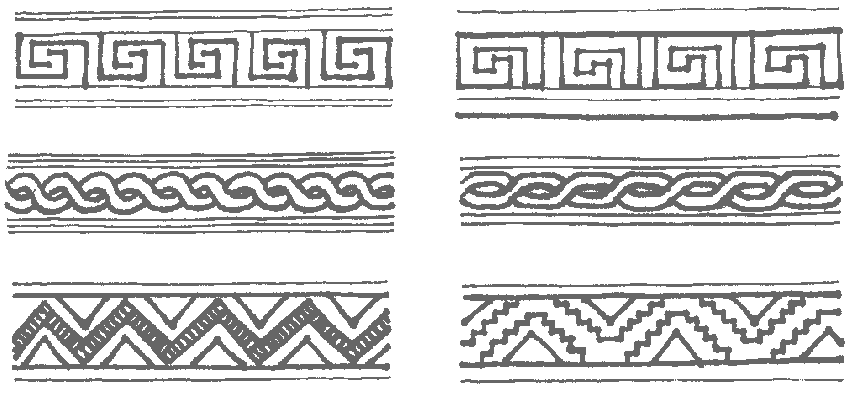
 1.
1. 2.
2. 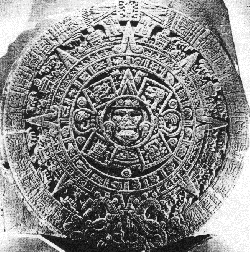 3.
3. 1.
1. 2.
2. 3.
3.  4.
4. 1. Detail
1. Detail 2. Mayan
2. Mayan 3. Hindu
3. Hindu
 1.
1. 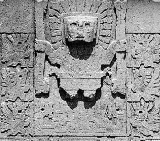 2.
2.